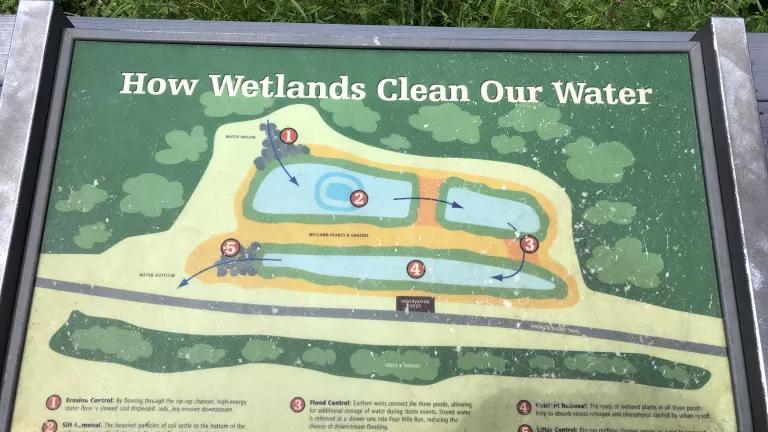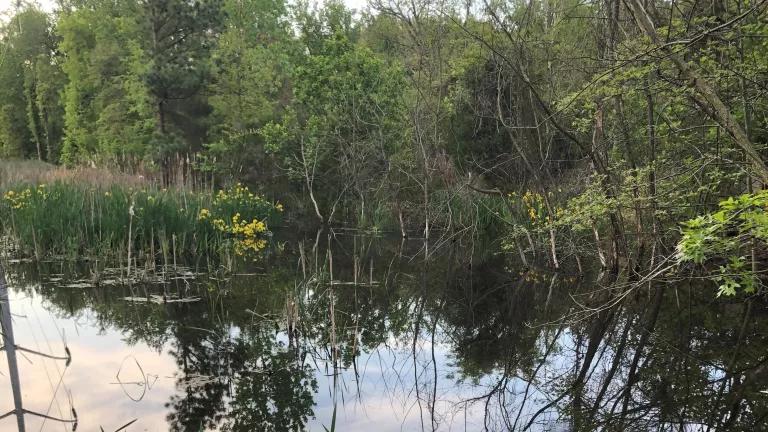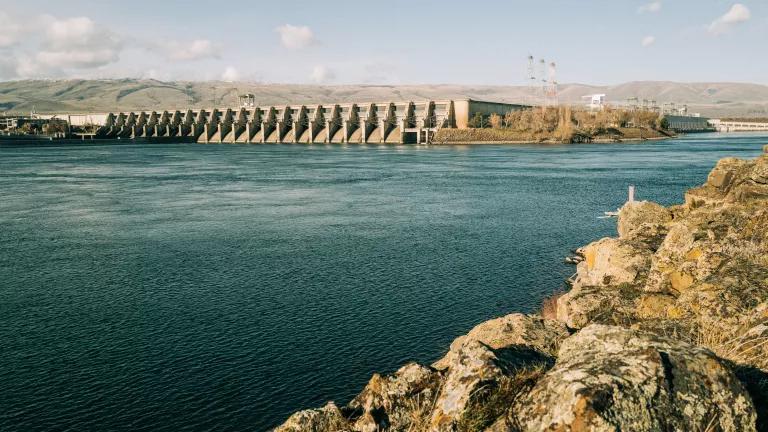Analysis Shows Threat to Our Waters from Supreme Court Case
Thousands—likely millions—of water bodies around the country could lose federal protections against unregulated dumping if the Court rules in favor of the plaintiffs and their industry allies in Sackett v. Environmental Protection Agency.

Sign at a wetland in Arlington, VA, which Sackett plaintiffs would exclude from the Clean Water Act
The year 1972 was pretty awesome. Stevie Wonder released “Talking Book,” my sister was born, and Congress adopted the Clean Water Act—the law that for five decades has helped to protect our rivers, lakes, wetlands, and other water bodies from pollution and destruction.
Fifty years later, however, the Clean Water Act faces a grave threat—a case before the Supreme Court called Sackett v. EPA.
In a recent post, I described the case and highlighted many of the folks who weighed in to urge the Court to uphold the law. Now, NRDC and our partners at the Anthropocene Alliance, Earthjustice, Environment America, the National Wildlife Federation, and the Southern Environmental Law Center have released an issue paper that dives deeper into the stakes in the case. The paper explains the importance of the water bodies that the plaintiffs and their allies have asked the Court to eliminate in Sackett and the legal background for the case, and presents several case studies of the kinds of water bodies and areas that are most at risk and the kinds of projects that could escape scrutiny if the Court weakens Clean Water Act protections.
The examples include:
- Hundreds of acres of wetlands adjacent to the Okefenokee Swamp National Wildlife Refuge threatened by a strip mine proposal;
- A 317-acre lake in Orlando, Florida used for recreation;
- Rain-dependent streams in Texas and New Mexico, which a pipeline now runs through; and
- Wetlands on the edge of the Savannah National Wildlife Refuge to be filled for the construction of a massive industrial, residential, and commercial development.
And, as we explain, these examples are just the tippy-top of the iceberg; thousands—likely millions—of water bodies around the country could lose federal protections against unregulated dumping if the Court rules in favor of the plaintiffs and their industry allies.
The threat posed by Sackett led the New York Times to opine: “The Clean Water Act has been an exceptionally constructive law, vital to the ecological integrity of the country and broadly popular with the public. It would be a shame to risk all that by ignoring its needs and restricting its scope.”
I couldn’t agree more.




